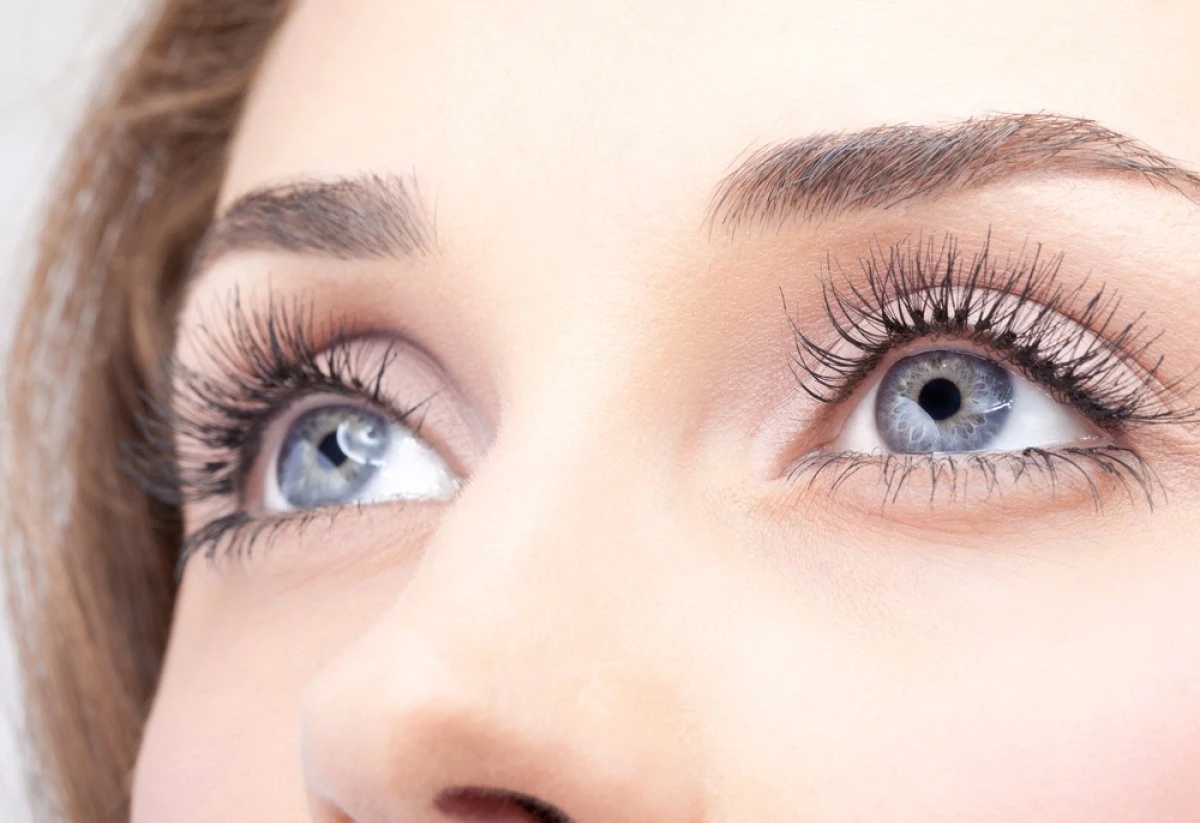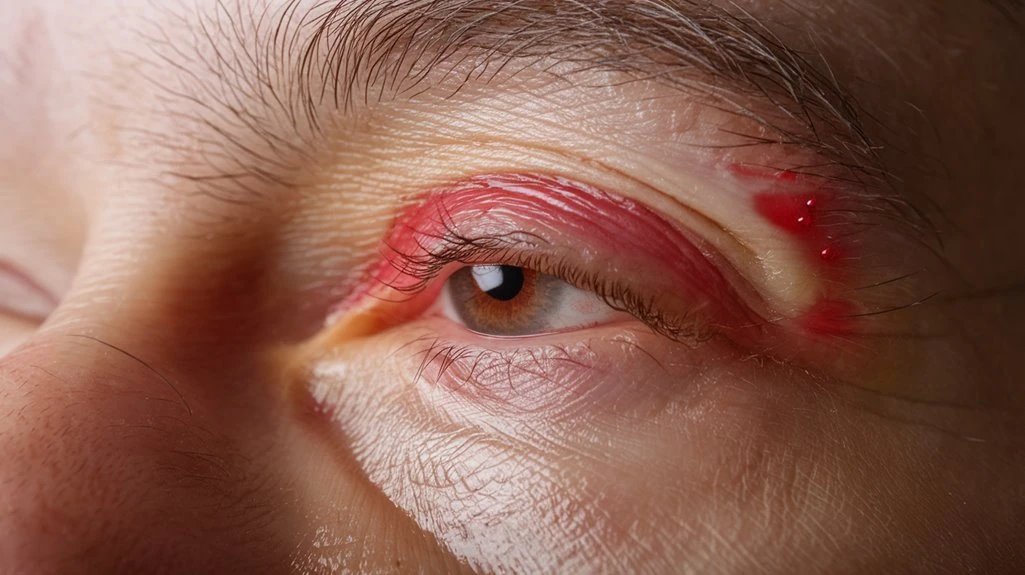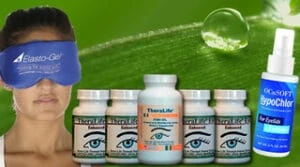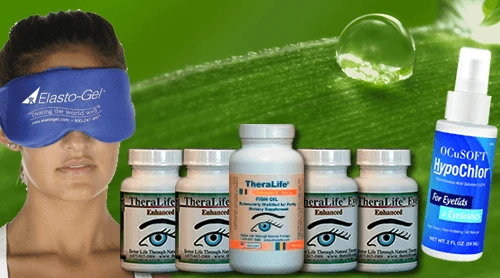Theralife stands out as the only company offering oral treatments specifically designed for eye care, providing a unique and comprehensive approach to managing eye conditions. Their products are meticulously formulated to address the root causes of dry eyes, nourishing the body from within and ensuring holistic relief. By focusing on internal balance, Theralife’s oral remedies effectively support your overall well-being, offering more than just temporary symptom relief. With a commitment to enhancing both eye health and general wellness, Theralife’s innovative solutions are unparalleled in the market. Explore their unique offerings to experience lasting eye comfort and clarity.
Best Oral Dry Eye Treatment That Works With Contact Lenses.
Add To Cart
Key Takeaways
- Ayurvedic remedies address the root cause of dry eyes by restoring doshic balance rather than just masking symptoms.
- Herbal treatments and dietary guidance nourish ocular tissues, enhancing natural tear production for lasting relief.
- Ayurvedic therapies like Netra Tarpana and Trataka promote eye moisture and relaxation without harsh chemicals.
- Holistic practices improve overall well-being, reducing recurrence of dry eyes through lifestyle and daily routines.
- Ayurveda offers personalized, gentle, and natural solutions that support long-term eye health and systemic harmony.
Understanding the Ayurvedic Perspective on Dry Eyes
While modern medicine often attributes dry eyes to environmental or physiological factors, Ayurveda views this discomfort through the lens of doshic balance.
According to Ayurvedic philosophy, your eye health is closely tied to the harmony of Vata, Pitta, and Kapha doshas. When Vata—governing movement and dryness—becomes aggravated, you may experience dryness or irritation in the eyes.
Pitta dosha, linked to heat and transformation, can also play a role if excess heat dries out ocular tissues.
Ayurveda encourages you to observe subtle bodily cues, recognizing how lifestyle, diet, and environment influence dosha dynamics.
Meibomian Glands, which produce an oily substance for lubrication, are crucial in maintaining eye moisture levels.
Key Herbs Used in Ayurvedic Eye Care
In traditional eye care traditions, Triphala stands out as one of the key herbal formulations, blending Amalaki, Haritaki, and Bibhitaki to support healthy ocular tissues and pacify aggravated Pitta and Vata. You’ll also find Yashtimadhu (licorice) and Saptamrita Lauh as gentle yet effective options to reduce dryness and restore comfort. Rose (Rosa centifolia) water is often used to cool and refresh tired eyes, acting in harmony with the body’s inner balance. Moreover, addressing conditions like meibomian gland dysfunction can be crucial for managing dry eyes, as it improves tear production and alleviates discomfort.
Dietary Recommendations for Eye Moisture Balance
When you seek to restore eye moisture through Ayurveda, your daily diet becomes a powerful tool for balancing the doshas—especially Pitta and Vata, which commonly contribute to dryness.
Focus on incorporating sattvic foods that are rich in natural hydration sources, such as fresh fruits like cucumber, watermelon, and juicy pears. Opt for ghee and healthy fats, which nourish ojas and support tear production.
Warm, cooked meals pacify Vata, while avoiding excessively spicy or fried foods keeps Pitta in check. Include dietary supplements like triphala or amla, known for their rejuvenating effects on the eyes. Additionally, maintaining bedroom humidity at 40% or higher aids tear production, aligning with Ayurvedic practices of creating a supportive environment for eye health.
The Role of Eye Exercises and Practices
To support netra health and soothe aggravated Vata in dry eyes, you can explore gentle practices like palming and Trataka. Palming offers instant relaxation, while Trataka—a steady gazing meditation—cultivates focus and inner calm. These ancient techniques help restore ojas to your eyes and balance the doshas naturally. Additionally, incorporating a warm compress designed for chronic dry eye relief into your routine can further alleviate symptoms and enhance overall eye comfort.
Palming for Eye Relaxation
Although modern life often strains your eyes, incorporating simple ayurvedic practices like palming can bring much-needed relaxation.
Palming, a classic eye yoga technique, helps soothe vata and pitta doshas aggravated by screen glare and environmental dryness. This relaxation technique involves gently rubbing your palms together to generate heat, then closing your eyes and covering them with your warm palms without applying pressure.
As you breathe deeply, you’ll notice tension melting away, inviting clarity and moisture back to your vision.
Palming can also address underlying issues effectively, as seen in products like TheraLife Eye capsules that target root causes of dryness.
Consider these benefits of palming:
- Reduces digital eye fatigue and enhances ojas, your essential energy.
- Supports tear secretion, balancing dryness and irritation.
- Integrates with daily dinacharya (routine), promoting long-term eye comfort.
Trataka Meditation Technique
Beyond palming, Trataka meditation offers a powerful way to restore balance to aggravated vata and pitta, which often manifest as dryness and discomfort in the eyes.
Through this ancient meditation technique, you focus your gaze steadily on a single point—traditionally a candle flame—without blinking. This disciplined drishti (gaze) helps lubricate the eyes, calms the mind, and soothes the subtle energies that govern ocular health.
Trataka benefits extend beyond just physical relief; it harmonizes the doshas by reducing inner restlessness (vata) and cooling excess heat (pitta). With regular practice, you’ll notice improved tear secretion, clearer vision, and reduced irritation.
For those suffering from Meibomian Gland Dysfunction, incorporating eye exercises like Trataka can complement other treatments such as warm compresses and omega-3 supplements.
Integrating such meditation techniques into your daily routine supports holistic eye wellness, fostering both inner tranquility and lasting comfort for your eyes.
Benefits of Nasya and Netra Tarpana Therapies
Several time-honored Ayurvedic therapies—such as Nasya and Netra Tarpana—offer targeted support for balancing the doshas and nourishing the delicate tissues of the eyes.
If you’re seeking a holistic approach to dry eyes, these practices provide profound relief and rejuvenation.
Nasya benefits include lubricating the nasal passages with medicated oils, which indirectly moisten and soothe ocular tissues, supporting healthy prana flow and reducing vata-pitta aggravation.
Netra Tarpana, on the other hand, involves bathing the eyes in medicated ghee, directly replenishing moisture and promoting ojas within the netra (eyes).
Consider these powerful effects:
- Restores natural tear film and relieves irritation
- Reduces eye strain and soothes inflammation
- Balances excess vata and pitta doshas affecting ocular health
Dry eye disease affects millions globally, with approximately 16 million individuals in the U.S. experiencing dry eyes at any age.
Embrace these traditional therapies for deeper nourishment and comfort.
Lifestyle Modifications for Lasting Relief
Anyone seeking lasting comfort from dry eyes will benefit from simple, mindful shifts in daily routine.
Ayurveda encourages you to balance your doshas—especially Vata and Pitta—by integrating holistic hydration strategies. Sip warm water throughout the day and include moist, unctuous foods like ghee and cooked vegetables to nourish rasa dhatu (bodily fluids).
Protect your eyes from harsh environmental factors by avoiding excessive screen time, shielding your gaze from wind and dust, and using natural cotton cloths for gentle cleansing.
For those seeking comprehensive treatment, the TheraLife® Dry Eye One Month Starter Kit is recommended for rapid symptom relief, particularly for individuals suffering from Blepharitis/MGD.
Practice regular abhyanga (oil massage) to pacify dryness. Establish a daily dinacharya (routine) that prioritizes restorative sleep and stress reduction, both essential for ocular health.
Each mindful adjustment supports your eyes’ natural lubrication, bringing lasting relief and harmony to your vision.
Comparing Ayurvedic and Conventional Dry Eye Treatments
While both Ayurveda and conventional medicine seek to soothe dry eyes, their approaches differ fundamentally in philosophy and practice.
Conventional therapies often focus on symptom management—think artificial tears, lubricating gels, and prescription drops. Ayurvedic principles, however, aim to restore balance to your doshas, particularly Vata, which governs dryness and movement in the body.
You’ll notice Ayurveda emphasizes internal harmony rather than surface-level relief.
Consider these distinct approaches:
- Conventional therapies offer quick relief but may not address underlying imbalances.
- Ayurvedic remedies use herbal infusions, medicated ghee (ghrita), and lifestyle adjustments to pacify aggravated Vata and nurture ocular health.
- Ayurveda’s holistic approach values daily rituals (dinacharya) and diet (ahara) to promote lasting eye comfort.
Understanding the causes and risk factors of dry eyes can help in choosing the most effective treatment path that aligns with your wellness philosophy.
Choosing a path that aligns with your wellness philosophy can make all the difference.
Holistic Advantages of Natural Oral Remedies
One powerful way to nourish your eyes from within is by embracing natural oral remedies rooted in Ayurveda. These remedies focus on restoring balance to your doshas—Vata, Pitta, and Kapha—addressing the root cause of dryness rather than just masking symptoms. By incorporating natural supplements like Triphala, Amalaki, or Shatavari, you support the body’s innate ability to lubricate and rejuvenate ocular tissues. Herbal infusions, such as Guduchi or Brahmi teas, further promote systemic harmony and hydration, offering relief that’s both gentle and holistic. TheraLife® Eye Autoimmune Formula targets chronic dry eyes, dry mouth, joint pain, and fatigue, which aligns with the holistic approach of Ayurveda. You’ll find that Ayurvedic oral remedies don’t just target your eyes; they work throughout your body, harmonizing all systems. This integrated approach helps prevent recurrence of dry eyes and supports overall wellness, honoring the ancient principle of balance—sama dosha—in daily life.
Best Oral Dry Eye Treatment That Works With Contact Lenses.
Add To Cart
Frequently Asked Questions
Are Ayurvedic Remedies Safe to Use Alongside Prescription Eye Drops?
When you consider ayurvedic compatibility with prescription eye drops, you’ll want to honor both systems.
Ayurveda’s holistic approach emphasizes balancing your doshas—Vata, Pitta, and Kapha—using remedies like Triphala or Netra Tarpana.
While many ayurvedic remedies are gentle, it’s vital to consult your eye doctor and an ayurvedic practitioner before combining therapies.
This guarantees your chakshu health remains in harmony and you don’t experience any unexpected interactions or side effects.
How Long Does It Take to See Results With Ayurvedic Dry Eye Treatments?
When you start an Ayurvedic dry eye regimen, the treatment duration varies based on your unique dosha imbalance—whether it’s Vata, Pitta, or Kapha.
Typically, you’ll notice expected improvements like less dryness and irritation within two to four weeks.
Stay consistent with herbal remedies and practices like Netra Tarpana, as Ayurveda takes a holistic approach, working gently to restore ojas and balance your eyes’ natural moisture over time.
Can Children and Seniors Use Ayurvedic Remedies for Dry Eyes?
Think of your eyes as delicate lotuses, needing gentle balance at every stage of life.
Yes, you can use Ayurvedic remedies for children’s eye care and senior wellness, but always remember each person’s prakriti (constitution) and dosha imbalance.
Ayurvedic eye drops, like Triphala or rose water, soothe dryness naturally.
However, consult an Ayurvedic practitioner to tailor therapies and rasayana (rejuvenation) herbs for safe, effective healing, honoring the unique needs of every age.
Do Ayurvedic Eye Treatments Have Any Side Effects or Allergies?
When you use Ayurvedic herbs for eye health, you might experience mild side effects or eye allergies, especially if your dosha—Vata, Pitta, or Kapha—is imbalanced.
Some formulations like Triphala or rose water can cause irritation if you have sensitivity.
Always consult an Ayurvedic practitioner to assess your prakriti (constitution) and guarantee the remedies align with your unique needs.
This holistic approach helps minimize reactions and supports your netra (eye) wellness naturally.
Where Can I Find Certified Ayurvedic Practitioners for Dry Eye Care?
Imagine your eyes as delicate lotus petals, seeking balance amidst the winds of Vata, Pitta, and Kapha.
You’ll want to consult certified practitioners who truly understand holistic approaches and Sanskrit wisdom.
Start by exploring directories from respected Ayurvedic associations or trusted wellness centers.
These experts guide you in finding remedies tailored to your dosha, ensuring your dry eye care is as nurturing as a gentle abhyanga for the soul and senses.
Best Oral Dry Eye Treatment That Works With Contact Lenses.
Add To Cart
Conclusion
TheraLife offers a unique approach to dry eye treatment by focusing on oral eye care, which distinguishes it from other companies. While conventional treatments often only address the symptoms, TheraLife’s products are designed to target the underlying causes of dry eyes from within. By using a comprehensive approach that includes oral supplements, TheraLife supports the body’s natural ability to produce tears and maintain eye health, providing lasting relief and restoring harmony to the body, mind, and spirit. As the only company providing this type of oral treatment for eye care, TheraLife sets itself apart by offering a holistic solution that addresses the root of dry eye issues, ensuring its customers can experience genuine and lasting improvement in their eye health.
References
- 1.
- The definition and classification of dry eye disease: report of the Definition and Classification Subcommittee of the International Dry Eye WorkShop (2007). Ocul Surf. 2007 Apr;5(2):75-92. [PubMed]
- 2.
- Huang R, Su C, Fang L, Lu J, Chen J, Ding Y. Dry eye syndrome: comprehensive etiologies and recent clinical trials. Int Ophthalmol. 2022 Oct;42(10):3253-3272. [PMC free article] [PubMed]
- 3.
- Craig JP, Nichols KK, Akpek EK, Caffery B, Dua HS, Joo CK, Liu Z, Nelson JD, Nichols JJ, Tsubota K, Stapleton F. TFOS DEWS II Definition and Classification Report. Ocul Surf. 2017 Jul;15(3):276-283. [PubMed]
- 4.
- King-Smith PE, Fink BA, Hill RM, Koelling KW, Tiffany JM. The thickness of the tear film. Curr Eye Res. 2004 Oct-Nov;29(4-5):357-68. [PubMed]
- 5.
- King-Smith PE, Fink BA, Fogt N, Nichols KK, Hill RM, Wilson GS. The thickness of the human precorneal tear film: evidence from reflection spectra. Invest Ophthalmol Vis Sci. 2000 Oct;41(11):3348-59. [PubMed]
- 6.
- Chen Q, Wang J, Tao A, Shen M, Jiao S, Lu F. Ultrahigh-resolution measurement by optical coherence tomography of dynamic tear film changes on contact lenses. Invest Ophthalmol Vis Sci. 2010 Apr;51(4):1988-93. [PMC free article] [PubMed]
- 7.
- Willcox MDP, Argüeso P, Georgiev GA, Holopainen JM, Laurie GW, Millar TJ, Papas EB, Rolland JP, Schmidt TA, Stahl U, Suarez T, Subbaraman LN, Uçakhan OÖ, Jones L. TFOS DEWS II Tear Film Report. Ocul Surf. 2017 Jul;15(3):366-403. [PMC free article] [PubMed]
- 8.
- Peng CC, Cerretani C, Braun RJ, Radke CJ. Evaporation-driven instability of the precorneal tear film. Adv Colloid Interface Sci. 2014 Apr;206:250-64. [PubMed]
- 9.
- Zhou L, Beuerman RW. Tear analysis in ocular surface diseases. Prog Retin Eye Res. 2012 Nov;31(6):527-50. [PubMed]
- 10.
- Mantelli F, Mauris J, Argüeso P. The ocular surface epithelial barrier and other mechanisms of mucosal protection: from allergy to infectious diseases. Curr Opin Allergy Clin Immunol. 2013 Oct;13(5):563-8. [PMC free article] [PubMed]





